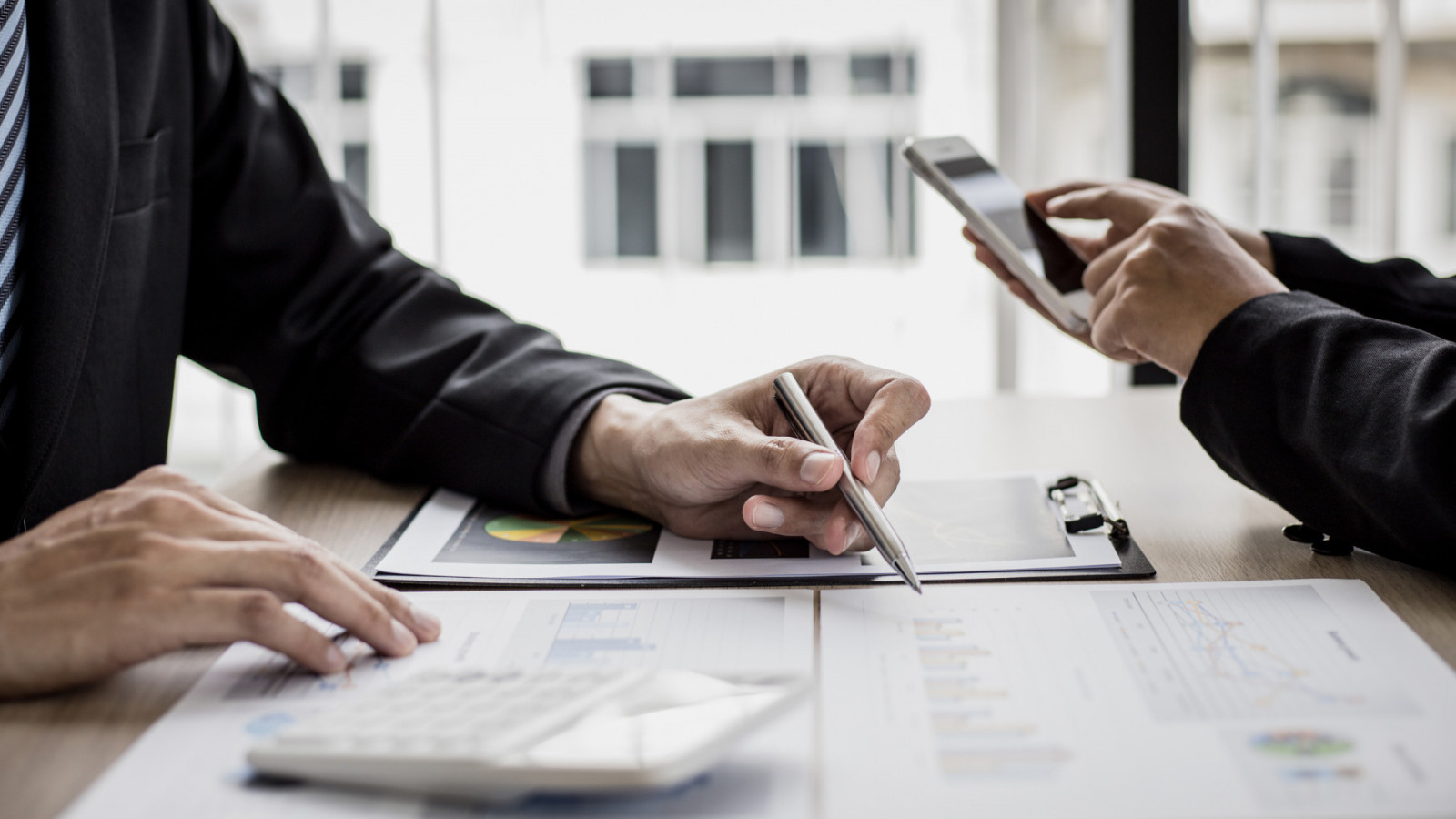Fixed costs Fixed Cost is the total cost that a business must pay periodically, regardless of changes in production output or business activity level over a certain period of time. Understanding and controlling this type of cost is the core foundation for optimizing profits and making effective strategic decisions.
This article will provide a comprehensive view from definition, calculation, comparison with variable cost, to fixed cost management and optimization strategies, helping business owners and financial managers build a solid operating foundation.
1. Definition of fixed costs
Fixed costs are expenses that a business must pay periodically, not changing with production output or revenue in a certain period of time. Regardless of whether the business is strong or weak, these expenses still need to be paid to maintain the existence of the operating apparatus.
Common examples of fixed costs include:
- Office and factory rent
- Office and management staff salaries (not calculated by product)
- Depreciation costs of fixed assets (machinery, factories)
- Regular maintenance costs, property insurance
- Administrative fees, legal fees, bank interest

2. Main characteristics of fixed costs
Fixed costs has unique characteristics that businesses need to master to effectively manage finances. These characteristics help distinguish it from other types of costs and are the basis for business planning.
- Stability and periodicity: Fixed costs remain at a roughly constant level over an accounting period (month, quarter, year). Businesses must pay these expenses periodically, regardless of whether business is good or bad.
- No change in output: This is the key feature. Whether output doubles or halves, expenses such as factory rent and insurance remain the same. This creates economies of scale as output increases.
- Persists when there is no activity: Even if the business temporarily stops production (output is zero), fixed costs still arise. This is the biggest financial burden during times of crisis.
- Can be adjusted according to long-term strategy: Although “fixed” in the short term, businesses can completely change these costs in the long term through strategic decisions such as expanding factories, downsizing, or renegotiating leases.

3. Main components that make up fixed costs
Fixed costs are made up of many different items. Businesses need to clearly identify each component to have a reasonable control plan and budget allocation.
- Indirect labor wages: Including salaries of administrative staff, accountants, managers, security guards... positions that do not directly create products.
- Rent: Including office, warehouse and factory rental costs under long-term or short-term contracts.
- Fixed asset depreciation costs: Is the allocation of the value of assets (machinery, equipment, factories) into production and business costs during its useful life.
- Insurance: Compulsory insurance (social insurance, health insurance) for employees and property insurance, fire insurance for factories.
- Bank interest: If a business borrows money to invest in fixed assets or supplement working capital, the periodic interest payments are a fixed cost.
- Administrative service costs: Including expenses such as electricity, water, internet, telephone, management software, etc. Although there are small variable factors, they are often classified as fixed costs because of their regular occurrence to maintain operations.
4. Classification of common fixed costs in businesses
Classifying fixed costs helps businesses have a more detailed perspective for management. Based on the nature and management purpose, fixed costs can be divided into the following types:

4.1. Based on management factors
- Committed Fixed Costs: These are costs that arise from the ownership of the basic physical facilities, machinery and organization of the business. They cannot be reduced in the short term without seriously affecting operations. Examples: depreciation costs, long-term factory rent.
- Discretionary Fixed Costs: These are costs that arise from annual management decisions and can be changed or cut without immediately affecting core operations. Examples: advertising costs, research and development, employee training.
4.2. Based on allocation factors
Periodic fixed costs:
-
- Are expenses that are calculated and made regularly over a period of time. For example: office rent, monthly salaries of management staff.
- Allocable fixed costs: Usually a one-time investment but the value is gradually allocated to expenses over many periods. The most typical example is the depreciation cost of machinery and equipment.
4.3. Step-Fixed Costs
This is a type of fixed cost that is only fixed within a certain range of activity and will change (jump) when the activity level exceeds a critical threshold.
Illustration: A garment factory with 1 supervisor (salary 15 million/month) can manage up to 20 workers. The supervisor's salary cost is 15 million/month when the factory size is from 1-20 workers. However, when the company recruits the 21st worker, they need to hire another supervisor. At this time, the fixed cost for the supervisor's salary will "jump" to 30 million/month.
5. The most accurate formula for calculating fixed costs
Accurately determining fixed costs is the first step to financial control. Businesses can use the following formulas to calculate them.
5.1. Direct method (basic formula)
This is the simplest and most common method, based on taking total costs minus variable costs.
Fixed cost (FC) = Total cost (TC) – Total variable cost (VC)
- Total cost (TC): Total operating costs for the period.
- Total variable cost (VC): Total costs vary directly with output.
For example: In May, the total cost of company A is 800 million VND. The accountant determines the total variable cost (raw materials, production worker salaries, etc.) is 450 million VND. So the fixed cost will be:
FC = 800 – 450 = 350 million VND.
5.2. High-low point method (based on activity level)
This method is more complex but gives accurate results when it comes to separating mixed costs. It helps determine fixed costs by analyzing cost variations at the highest and lowest levels of activity.
Step 1: Calculate variable cost per unit
(Highest operating fee – Lowest operating fee) / (Highest operating unit – Lowest operating unit)
Step 2: Calculate total fixed costs
FC = Highest operating cost – (Variable cost per unit x Highest operating unit)
For example: A business has the highest operating cost of 600 million VND when producing 5,000 products and the lowest cost of 400 million when producing 3,000 products.
- Step 1: Variable cost/product = (600 – 400) / (5,000 – 3,000) = 200 / 2,000 = 0.1 million VND (100,000 VND).
- Step 2: Fixed cost = 600 – (0.1 x 5,000) = 600 – 500 = 100 million VND.
6. Distinguish between fixed costs and variable costs (Fixed Cost vs. Variable Cost)
Understanding the difference between fixed and variable costs is a must in financial management. Confusion can lead to wrong decisions about selling price, output and profit.
Comparison table of Fixed Cost and Variable Cost
| Criteria | Fixed Cost | Variable Cost |
|---|---|---|
| Define | Are costs that do not change when output or revenue changes. | Are costs that vary directly and proportionally with output or revenue. |
| Nature | Cost of time, maintenance. | Cost of production. |
| When output = 0 | Still present (FC > 0). | Equal to 0 (VC = 0). |
| Cost per unit of product | Decreases as output increases. | Does not change when output changes. |
| For example | Rent, depreciation, office salaries, bank interest. | Raw materials, production staff salaries per product, packaging costs, sales commissions. |
| Risk Level | Higher, creating operating leverage. Burden when revenue is low. | Lower, flexible according to business situation. |
7. The importance of fixed costs in financial management
Fixed costs are not just a number on a financial statement, they are also a strategic factor that deeply affects every business decision of an enterprise.
7.1. Determine the minimum cost to maintain operations
Fixed costs is the “survival threshold” of the business. By determining the total monthly fixed costs, management knows exactly how much revenue they need to generate to break even. This is the basis for effective budgeting and set achievable business goals.
7.2. As a basis for making strategic business decisions
Fixed cost analysis helps businesses make important decisions such as:
- Product pricing: The selling price must be high enough to cover both the variable and fixed costs allocated to each product.
- Expand or contract: The decision to invest in additional machinery (increasing fixed costs) is only made when the output forecast is large enough to "bear" the additional costs.
- Continue or discontinue a product line: If the revenue from a product is not enough to cover its variable costs, discontinuing production is necessary.
7.3. Application of fixed costs in break-even analysis
One of the most important applications of fixed costs is the basis for break-even point (Break-Even Point) – the level of output or revenue at which total revenue equals total costs. Break-even point analysis helps businesses answer the question “How many products must be sold to avoid a loss?”.
Break-even point formula for output = Total fixed costs / (Unit selling price – Variable costs per unit)
Good control of fixed costs (keeping them low) will directly reduce the break-even point, helping businesses achieve profits more quickly.
8. 5 Tips to optimize fixed costs effectively for businesses
Control fixed cost It doesn’t mean cutting corners, it means spending wisely to maximize efficiency. Here are proven strategies to help businesses ease this burden.
- Outsourcing instead of permanent recruitment: Non-core jobs such as tax accounting, IT, marketing, legal can be outsourced to save on salaries, insurance, office space and training costs.
- Contract renegotiation: Periodically review your leases and service provider (internet, software) agreements. The market is always changing and you may be able to find better deals.
- Switch to flexible workspace: Instead of renting a traditional office long-term, consider a co-working space model or allowing employees to work remotely to significantly reduce rental and utility costs.
- Liquidation of unused assets: Review all assets, machinery and equipment. Anything that is no longer needed or is not operating effectively should be liquidated to reduce maintenance and depreciation costs.
- Applying technology to automate: Investing in management software and automation systems can increase fixed cost initially but will help reduce personnel and operating costs in the long term, resulting in higher efficiency.
Looking to automate your expense management process to cut errors and save time? Explore the solutions below.
9. Bizzi: Fixed Cost Management Automation Solution
Once you have identified and planned for optimization, implementing a powerful tool for execution and control is the next step. Bizzi is the solution that helps businesses Automate fixed cost management, increase transparency and optimize cash flow.
Automate the expense approval process
Bizzi with Enterprise cost management solutions helps simplify and automate the entire expense creation and approval process. Thereby, helping to minimize errors and shorten processing time. Thanks to that, all expenses are strictly controlled, quickly approved, ensuring transparency in financial management.

Set up flexible spending policies
Businesses can easily set up separate spending policies for each department, project or type of product. fixed cost such as office rent, fixed asset depreciation. This has helped optimize the budget and avoid unnecessary waste.
Budget and track expenses in real time
Bizzi allows businesses to create detailed budgets for each department and project, and track cash flow in real time. As a result, businesses can quickly identify ineffective spending and make timely adjustments to optimize finances.
Seamless integration with ERP systems
Bizzi connects easily with ERP systems, helping to synchronize financial data accurately and continuously. This gives businesses a more comprehensive view of their financial situation, helping them make more accurate strategic decisions.

Increase transparency and accountability in spending
With Bizzi, businesses can establish a clear and transparent cost control process that not only helps prevent misuse of funds but also promotes accountability in internal financial management.
Learn how Bizzi helps you automate your 90% processes business cost management and save hours for the accounting department.
Conclude
In short, fixed cost is an indispensable part of the financial structure of every business. Instead of seeing it as a burden, businesses should see it as an investment to maintain the operating machine. Good management fixed cost From identification, classification, accurate calculation to the application of optimal strategies and automation tools will create strong leverage, helping businesses not only survive but also develop sustainably in a volatile market.
Note: The definitions and methods in the article comply with general accounting principles and refer to standards from Circular 200/2014/TT-BTC of the Ministry of Finance of Vietnam. The content is for reference only and should be adjusted to suit each specific type of enterprise.
See more:


